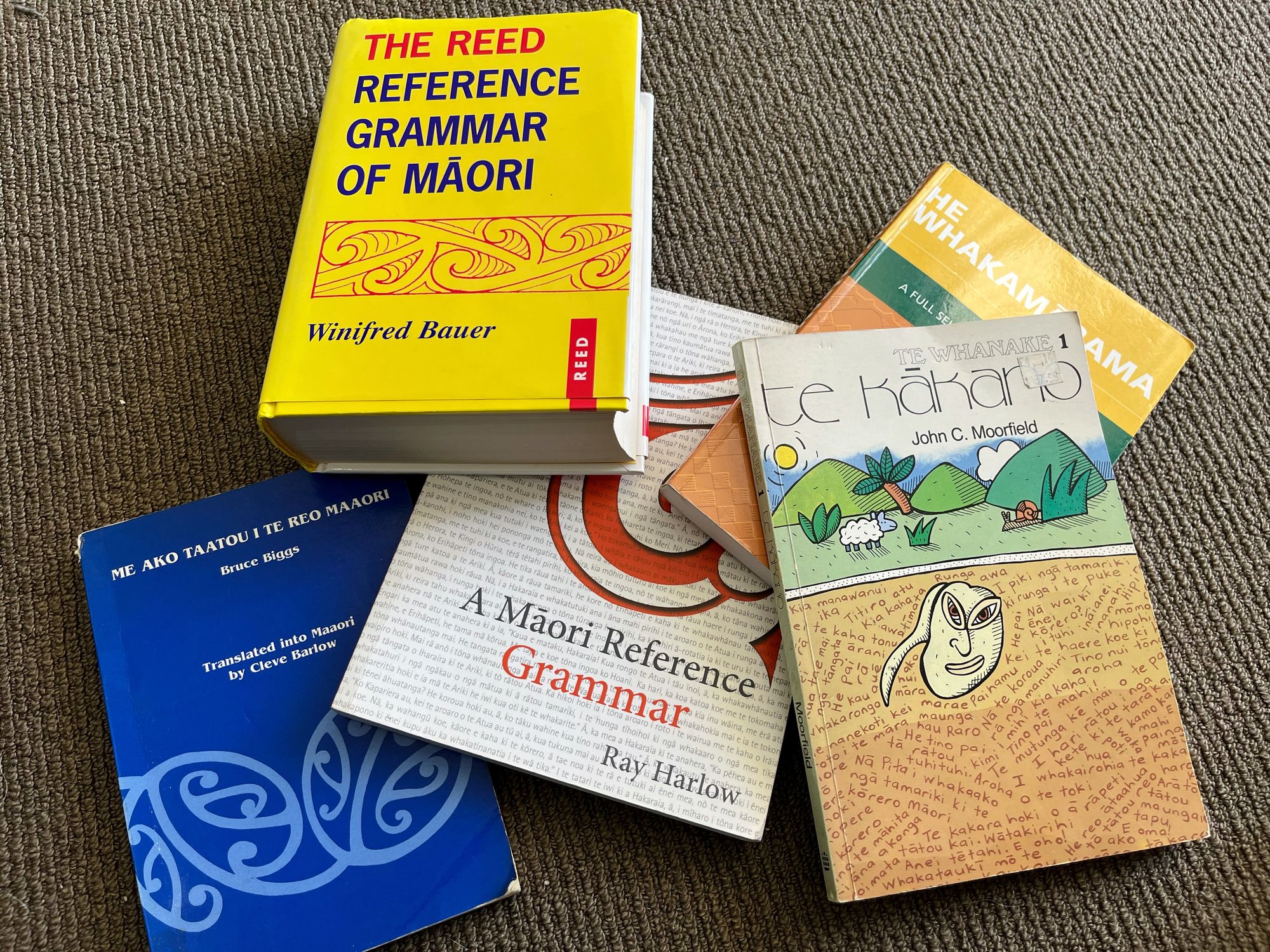"waenga" in te reo Māori
Lets look at how to use "waenga" or "waenganui" to express the concept of "in-between", "amongst" or in the middle of something.

Lets look at how to use "waenga" or "waenganui" to express the concept of "in-between", "amongst" or in the middle of something.
For the purpose of this post I'll be using "waenga" but "waenganui" is effectively the same meaning and can be used in the same place.
The Te Ako Dictionary reference for "waenga" reads:
1.(location) the middle, among, midst, amid, between, the intervening space - a location word, or locative, which follows immediately after particles such as "ki", "i", "hei" and "kei" or is preceded by "a" when used as the subject of the sentence. Variation of waenganui.
The word "waenga" fills the grammatical position of a "local noun" - it's the name of a location. It can be used where-ever a location is used in a sentence to express the concept of being in-between, amongst, or in the middle of something.
Located at
The pattern for a sentence using "waenga" to mean "object" is in the middle of "object 2" looks like this:
| Tense Marker | location | object | particle | object 2 |
|---|---|---|---|---|
| Kei | waenga | te tāone | i | te ngahere |
In this example the sentence "Kei waenga te tāone i te ngahere" translates to "The town is in the middle of the forest."
We can use the tense marker "I" to represent past tense:
| Tense Marker | location | object | particle | object 2 |
|---|---|---|---|---|
| I | waenga | te motoka | i | te rori |
"I waenga te motoka i te rori" translates to "The car was in the middle of the road."
The tense marker "Hei" represents future tense:
| Tense Marker | location | object | particle | object 2 |
|---|---|---|---|---|
| Hei | waenga | te pōkiha | i | ngā heihei |
"Hei waenga te pōkiha i ngā heihei" translates to "The fox will be amongst the chickens." Notice that "waenga" can mean "middle of" or "amongst".
Action happening at a location
Where the location is expressed as part of the sentence, rather than at the beginning, we use "i" as the particle preceding "waenga" and "i" as the particle following it to mark the thing that the object is amongst or between:
| Tense Marker | verb | object | particle | location | particle | object 2 |
|---|---|---|---|---|---|---|
| Kei te | tipu ake | te putiputi | i | waenga | i | ngā rākau |
The phrase "Kei te tipu ake te putiputi i waenga i ngā rākau" translates as "The flower is growing between/amongst the trees."
Motion
Things change slightly when we talk about motion happening to the middle, from the middle, or through the middle of something.
Motion from the middle of something uses the particle "i" to mark where the middle is:
| Tense Marker | verb | subject | particle | location |
|---|---|---|---|---|
| I | hīkoi | ia | i | waenga o te tāone |
"I hīkoi ia i waenga o te tāone" translates to "He/She walked from the middle of the town."
Motion to the middle of something uses the particle "ki" to mark where the middle is:
| Tense Marker | verb | subject | particle | location |
|---|---|---|---|---|
| Ka | oma | rātou | ki | waenga o te ngahere |
The phrase "Ka oma rātou ki waenga o te ngahere" translates as "They will run to the middle of the forest." Notice that we don't use "te", as in, "ki te waenga o te ngahere" - locations like "waenga", "runga", "raro", etc are not preceded by a determiner like "te".
Motion through the middle of something, perhaps going to somewhere else, also uses "i" as the particle proceeding "waenga" and following it, as in the "Action happening at a location" example above. This means there can be some ambiguity in meaning so context of the sentence must be taken into account.
| Tense Marker | verb | subject | particle | location | particle | object |
|---|---|---|---|---|---|---|
| I te | āta hīkoi | mātou | i | waenga | i | ngā kuiki |
"I te āta hīkoi mātou i waenga i ngā kuiki" translates as "We were carefully walking amidst/through the middle of the thorns."
Te Reo Māori Beginners Course Starting
I'm teaching a Te Reo Māori beginners course through Learn Māori Abroad, starting on Sunday the 8th of October NZ time. The course runs for 8 weeks and is delivered over Zoom and covers the basics of Te Reo Māori. If you're interested in starting your te reo Māori journey, hop over to the signup page and take look.
